The Mid-Atlantic Of Barrymore’s Twilight & Hepburn’s Dawn
DIRECTED BY GEORGE CUKOR/1932
STREET DATE: July 10th, 2018/KINO LORBER STUDIO CLASSICS
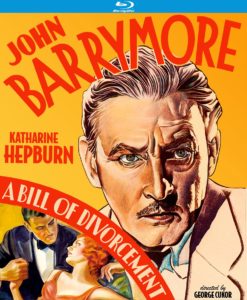 Given the title matter would have difficulty receiving release within a year and a half of the film’s debut, its depiction severely limited by the industry-wide adoption of the Hollywood Production Code in 1934, a convenient place to start with Kino Lorber’s recent Blu-ray is explaining the titular context of A Bill of Divorcement. The original 1921 play, by British playwright Clemence Dane, topically dealt with a dramatic situation whereby a marriage, following a recent British court ruling, could be dissolved legally by proving a partner’s mental incompetence “by reason of insanity”. Designed to relieve moral responsibility for the unforeseen burden of incurable mental illness, the quandaries and stigmas attached to the then-controversial issue of divorce receives additional complications in its adaptation from the prevalent attitude of the day towards both family inheritance and the after-effects of “shell shock”; more commonly known today as post-traumatic stress disorder.
Given the title matter would have difficulty receiving release within a year and a half of the film’s debut, its depiction severely limited by the industry-wide adoption of the Hollywood Production Code in 1934, a convenient place to start with Kino Lorber’s recent Blu-ray is explaining the titular context of A Bill of Divorcement. The original 1921 play, by British playwright Clemence Dane, topically dealt with a dramatic situation whereby a marriage, following a recent British court ruling, could be dissolved legally by proving a partner’s mental incompetence “by reason of insanity”. Designed to relieve moral responsibility for the unforeseen burden of incurable mental illness, the quandaries and stigmas attached to the then-controversial issue of divorce receives additional complications in its adaptation from the prevalent attitude of the day towards both family inheritance and the after-effects of “shell shock”; more commonly known today as post-traumatic stress disorder.
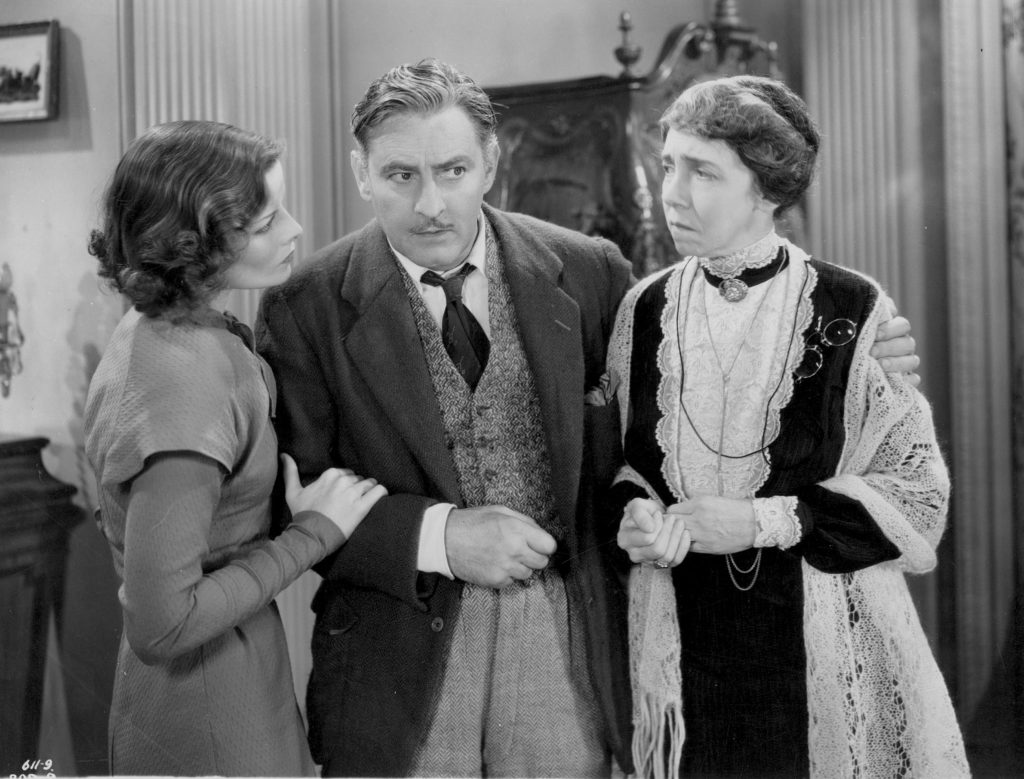
Enacting the drama of shifting postwar currents is John Barrymore as army veteran and composer Hilary Fairfield who, as the opening scene at the Fairfield manor one Christmas holiday establishes, has awoken from a decade-long catatonic episode and escaped an equal-length convalescence from a nearby mental hospital. In his lengthy absence, and equally long period of mental absentia, Hilary’s wife Meg (Billie Burke) has moved on with her life and, with the legal help of her lawyer fiancé Gray Meredith (Paul Cavanagh), has recently obtained the title’s object on grounds of her husband’s mental incapacity. Underscoring the inexorable passage of time against the sufferer’s inability to register it, Hilary’s slipstream level of consciousness must come to terms not only with himself as a suddenly middle-aged man whose wife has divorced him, with immediate plans to re-marry, but also his grown daughter Sydney (Katharine Hepburn), who now has a fiancé of her own (David Manners) and may be unfortunate heir to the affliction that overturned his own life.

Contrary to KL’s description of the film as a “witty romantic comedy”, A Bill of Divorcement is not in any way a very merry Christmas. Although the reputation of director George Cukor may suggest a lighter tone, especially given his and producer David O. Selznick’s immediately subsequent Dinner at Eight (1933), the one-room play adaptation, unfolding in more or less real time, is intended as an actor’s showcase of screen-capitalized Serious Drama. Interestingly, and despite the pedigree of its artistic personnel, A Bill of Divorcement largely fails as “serious drama”, however — the plot device of insanity glaringly treated with a facileness bordering on falsity — but gains on its static trappings through a pair of extraordinarily strong performances. As such, the unusual character of that screen chemistry invites comparison not with their later Dinner at Eight, but rather in Cukor and Selznick’s previous and first collaboration, What Price Hollywood? (1932).
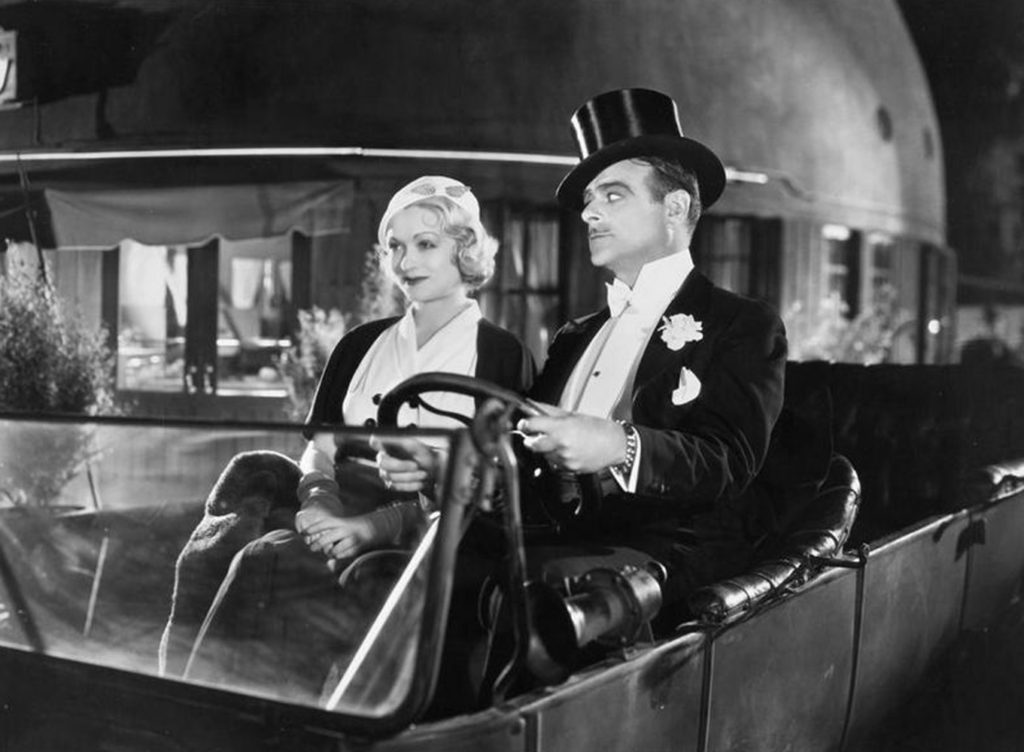
Constance Bennett (left) and Lowell Sherman (right) in producer David O. Selznick and director George Cukor’s WHAT PRICE HOLLYWOOD? (1932)
Starring Lowell Sherman as an alcoholic director whose ingenue discovery, played by Constance Bennett, comes to outshine her discoverer’s career, A Bill of Divorcement features a real-life though onscreen dimension to that situation – later redone as producer Selznick’s 1937 drama A Star is Born, and still later remade by director Cukor as the 1954 musical – in the casting of established though waning matinee idol John Barrymore – onetime First Member of the American Stage – opposite Katharine Hepburn in her first film and star-making debut. The fall of Barrymore and the rise of Hepburn, one might argue, is dramatically captured in the respective and impressive mid-Atlantic of their accents – the story is supposedly set in England, after all – and the spoiler-centric resolution of the film, where father and daughter rather ludicrously decide to wall themselves up together in the family manor – playing piano duets into mutual oblivion – similarly places the pair in the stultifying No Man’s Land from which the drama also fails to escape.
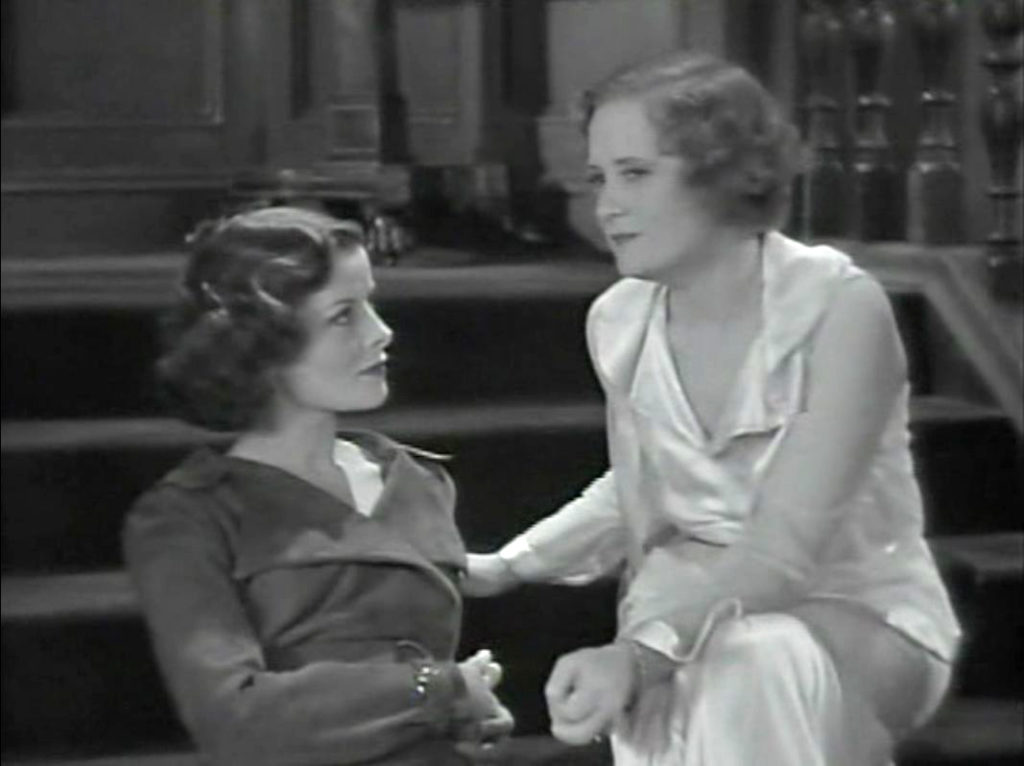
Billie Burke, Paul Cavanagh, and especially the over-mannered David Manners (who in every sense bored his romantic leading way through pre-code cinema from Dracula [1931] to The Black Cat [1934]) are mere distracting satellites to the main star showcase of Barrymore’s twilight and Hepburn’s dawn. The artificial, stilted style of performance, the proscenium-stuck, stage-moored view of post-silent cinema, the stuffy dressing and lifeless sheen of the settings; the gloppy, overdone faults of this era of Theatrical Cinema are inescapably evident in each mid-word pronunciation of the ‘h’ syllable (“Rah-thuh!”). However, the onscreen spectacle of five decades of irrepressibly “Barrymore!” stage tricks – the wicked eyerolls, the astonished eyebrow arches, the lilting and knowing ee-nun-cee-ay-shun of ill-chosen words (as if he, the performing actor, is somehow still in on-going debate with the playwright) – finds its equal in Hepburn’s calculatedly casual-uncasual posture, poses, and deportment. Just crossing a room and lounging on a sofa could be a grand adventure with Ms. Hepburn (and, really, I can say with some confidence that there were no “Ms.”s in American cinema before Katharine Hepburn), and if two performers could make a viewer feel that encroaching madness is a preferable alternative to the arid rituals of the British middle class, John Barrymore and Katharine Hepburn sitting on a piano bench and howling into the void together unequivocally qualifies as a triumphantly Happy Ending.
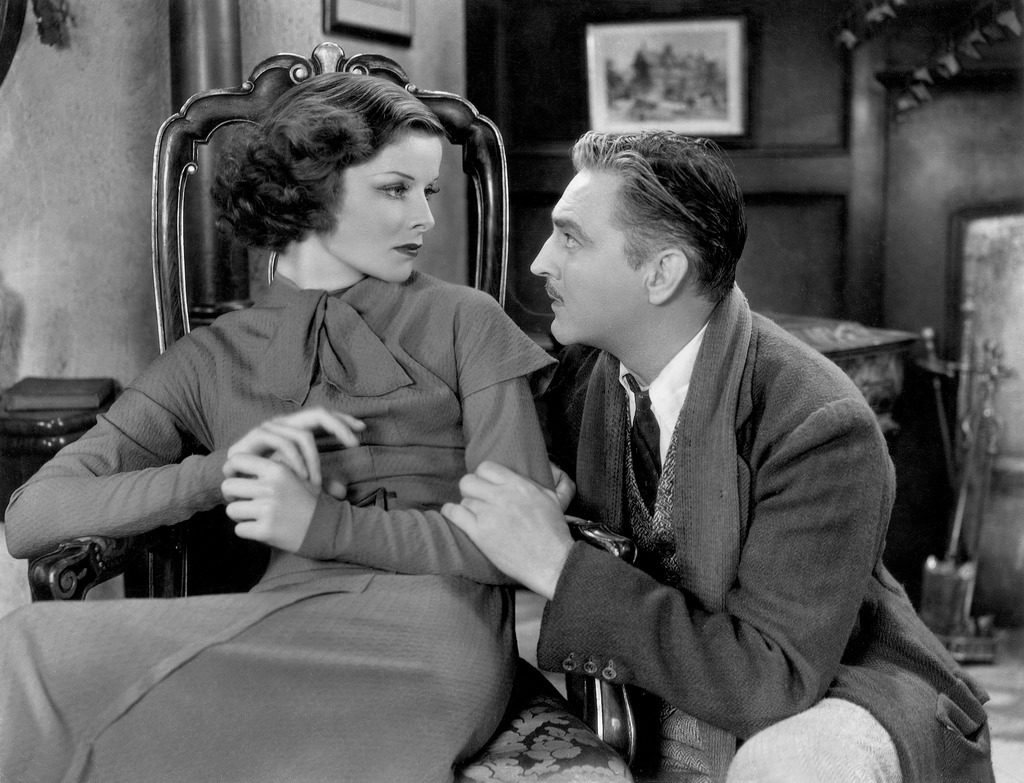
As an equally unequivocal enthusiast for the audio commentary, this reviewer is saddened to report that Kino Lorber has not included one for their otherwise clean and visually-glowing Blu-ray transfer of A Bill of Divorcement. A John Barrymore, George Cukor, David O. Selznick, or indeed a Katharine Hepburn specialist’s perspective on the film and its place in its many luminaries’ screen careers – Barrymore in his screen-acting prime, Selznick’s gradual emergence as an independent producer, the beginning not only of Hepburn’s movie career but also her 50-year, 10-film association and collaboration with George Cukor – would have been quite welcome in contextualizing the importance of this film in Hollywood history. Perhaps, like the transcontinental style of performance Barrymore and Hepburn simultaneously embody and overturn, we the viewer can be left to the disaffected mid-Atlantic of our own muddled musings.
The images used in this review are intended only as a reference to the film, its promotion, or to related content and are not meant to reflect the image- or product-content of Kino Lorber’s Blu-ray.

